After arriving in India in 1498, the Portuguese set up several colonies to expand and protect its commercial empire that extended east of Africa all the way to Japan (Cartwright, 2021). Goa became a Portuguese colony in 1510 and was not returned to India until 1961. That’s about 450 years of colonization. What happened during those years is an intriguing story of racial, political, and religious tensions that sometimes boiled over as various factions tried to dominate the region. At one point, and in an unexpected turn of events, the Inquisition showed up to put an end to religious strife. Yes, really. Throw in the Dutch and the English into the spicy mix, and I imagine that the locals were none too pleased to have all this mayhem going on their pristine beaches.
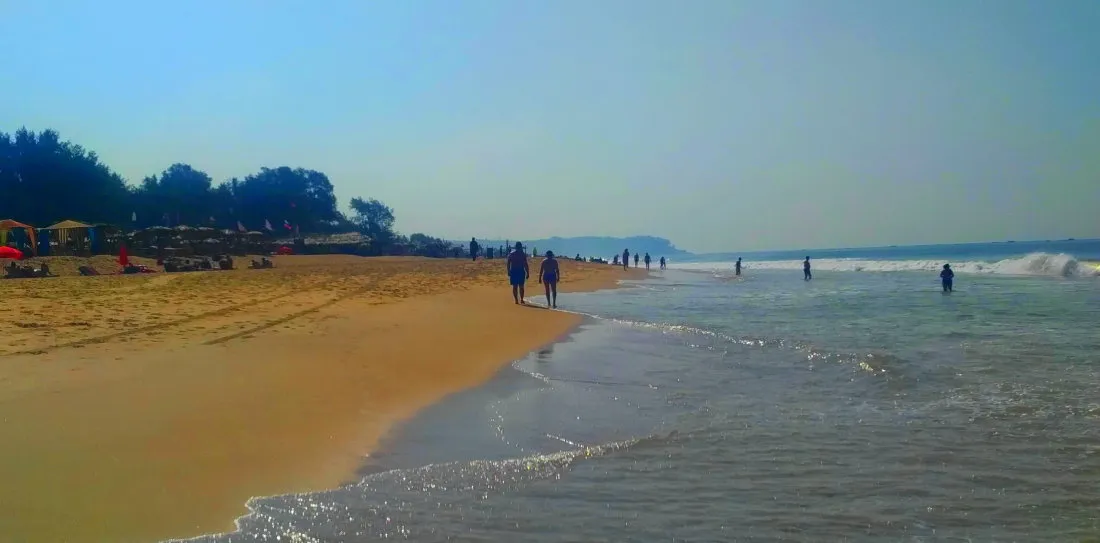
As I stood on Calangute beach, I saw the sand stretched far into the hazy distance, where a rocky outcrop spilled into the sea.
“That’s Fort Aguada,” I said to Bianca.
“It’s going to be a long walk,” she said adjusting her broad brimmed hat.
I looked up at the sky. “Not a single cloud. Now that I think of it, I don’t remember seeing any clouds since we arrived.”

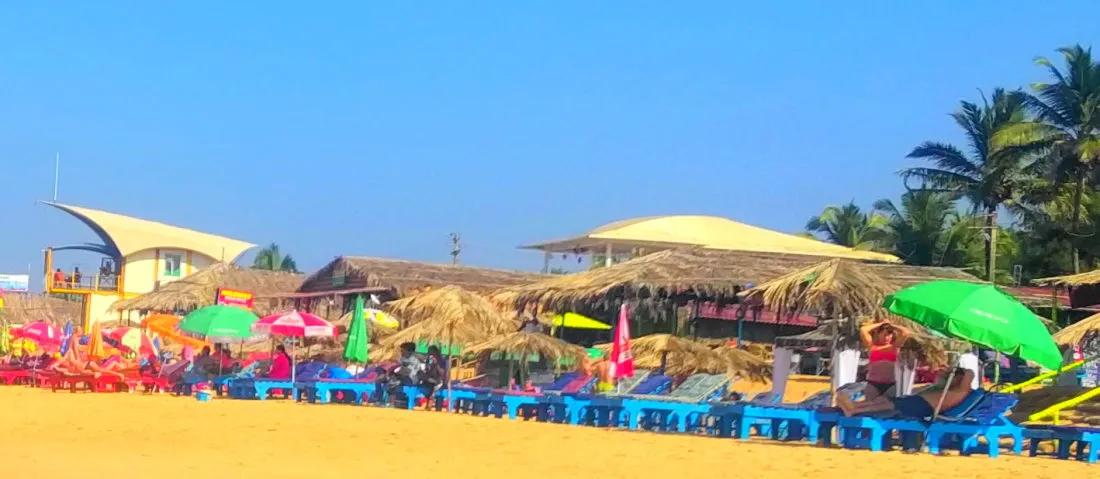
It was a hot arid land. The beach had a rugged desert-like feel to it. I tried to imagine what it looked like in the 15th century when the Europeans arrived. Now, the beach was populated with restaurants and lounging chairs, but what a fantastic sight it must’ve been centuries ago. Wide-eyed explorers peering from their ship gliding along the coast.

The water was warm, and we gleefully splashed it as we began our trek towards the fort. It wasn’t long before we were approached by restaurants workers inviting us to all manner of delicious wonders. As the proportion of offers grew, our enjoyment decreased, so we began to play a little game. Whenever we saw someone getting ready to approach us, we walked deeper into the water. This slowed us down, but it became a fun way to avoid the stream of customer service reps lined up along miles of beach.
“Monsoon season is intense around here,” I said peering into the horizon. Some shacks had been damaged during a high-tide monsoon a couple of months prior. It was difficult to imagine any rain in this dry place. The fierce sun was relentless.

After an hour of trekking, we stopped to have a bite to eat and swim around a bit. I jumped on the waves, and the powerful roiling water dragged me across the sand. I felt a burning sensation on my knee. When I stood up I noticed it was bleeding and had a nasty scrape.
“Just my luck,” I said.
We continued our leisurely stroll, marveling at the way Indians enjoyed playing on the beach. A group of them rode on top of a large inflated banana that skipped along the waves while those on board screamed and were unceremoniously dumped in the water by the fast-moving boat. Others scrambled onto boats for dolphin tours on other parts of the coast. Music. The sound of laughter in the air.

As we neared the fort, we saw a man in a shack waving his arm and calling out.
“Is that dude talking to us?” I said.
“Who is he?”
“I don’t know.”
He walked rapidly towards us and greeted us cheerfully like we were old friends. I was mystified and tried to remember if I had seen him before. I couldn’t place him anywhere. In broken English, he asked us a few questions about Canada in general. I thought that maybe he was just interested in learning about tourists. We talked at length, exchanging convoluted stories and gesturing with our hands. I didn’t know his intent until he casually mentioned that his brother had a jewelry shop just behind a nearby restaurant.
“You like to see?” he said.
“Maybe later. We’re going to the fort now,” I said.
I have to admit that I was disappointed that my newfound friend simply wanted to sell us stuff and not actually establish an inter-cultural exchange. I had forgotten that I was in one of the most important trading outposts of the ancient world.
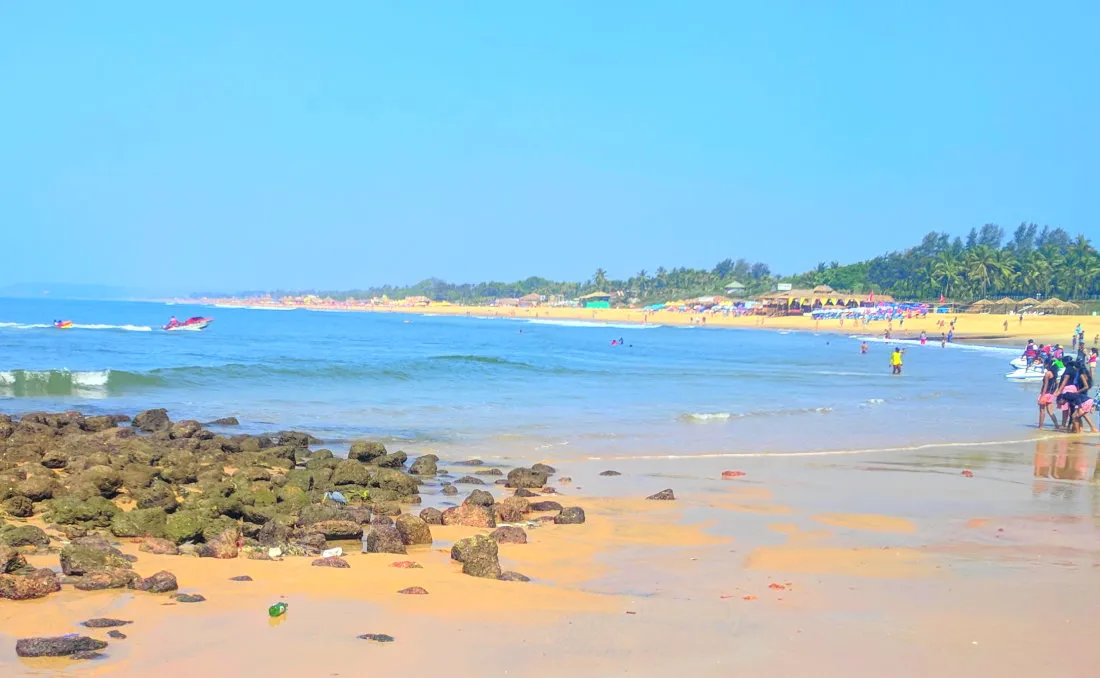
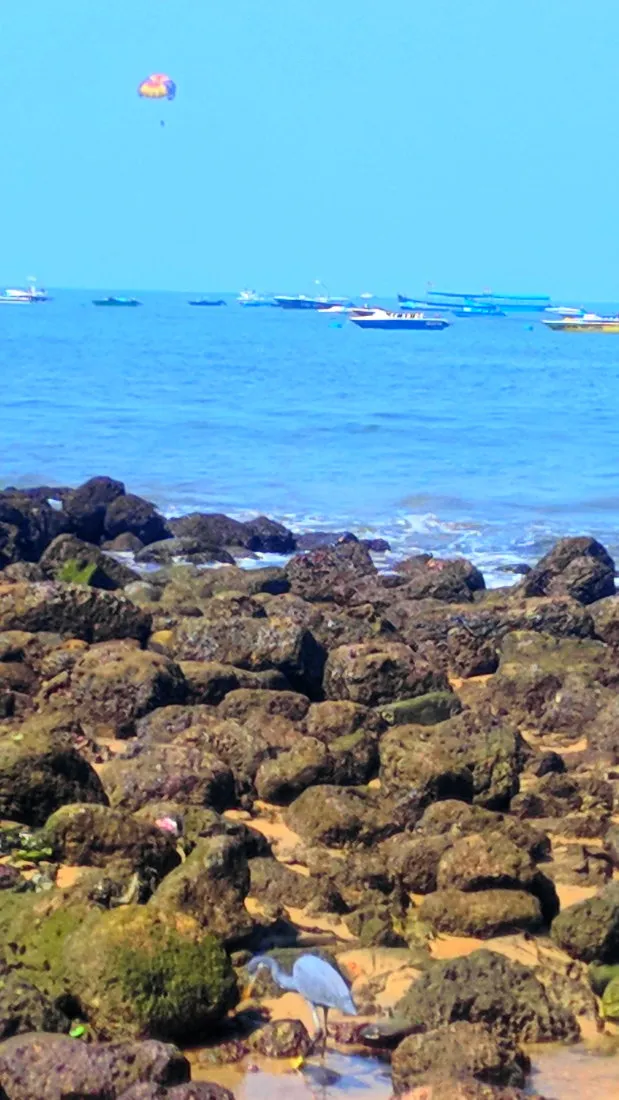
The sand gave way to a rocky shore, where birds skittered among the rocks looking for tasty morsels. One particular bird looked like he was wearing orange socks, quickly scurrying along the beach as if on wheels. I had never seen such a bird before, and I was endlessly fascinated by its foraging behavior. I observed him until Bianca gave me a gentle nudge on the shoulder and pulled me away from my naturalist reverie. It was time to go up to the fort.
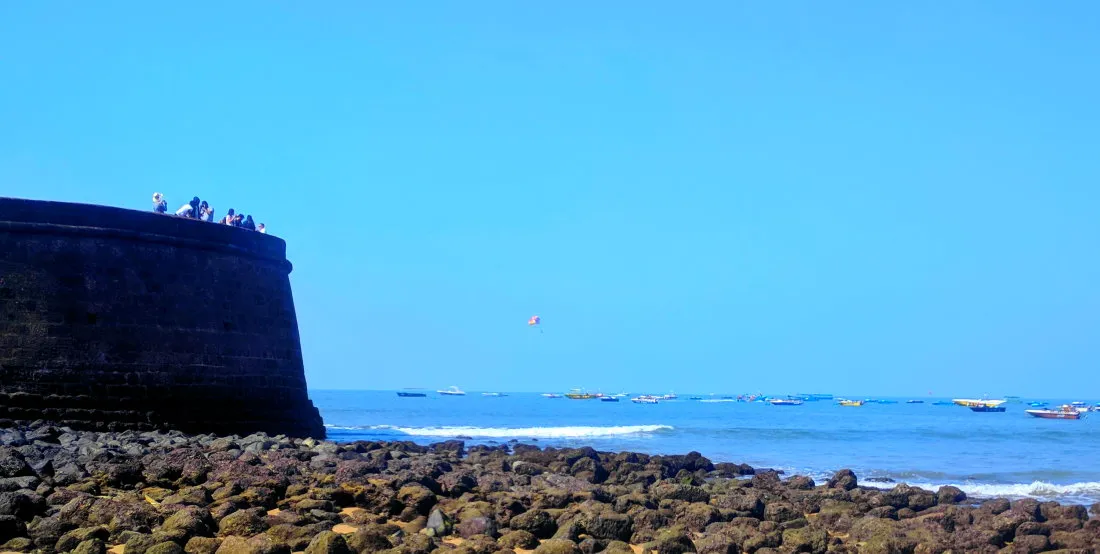
In order to protect their interests, the Portuguese built this fort with a clear view of the Arabian sea. Fort Aguada (watery in Portuguese) was so named because of the fresh-water spring that ran within and was used to resupply ships. It was one of the largest water storage reservoirs in Asia (Fort Aguada on Wikipedia). The upper portion of the fort was located on Candolim beach, while the lower portion was located on the neighboring Sinquerim beach.
A set of steps led up to the fort’s walkway along the top of the wall. From that vantage point, one could see the majesty of the Arabian sea. A sense of cultural deja-vu came over me as I looked around the fort, which had been constructed with a porous reddish rock. It reminded me of forts from my travels to Latin America. You could not help but feel the presence of the Iberian settlers who resided here in antiquity.
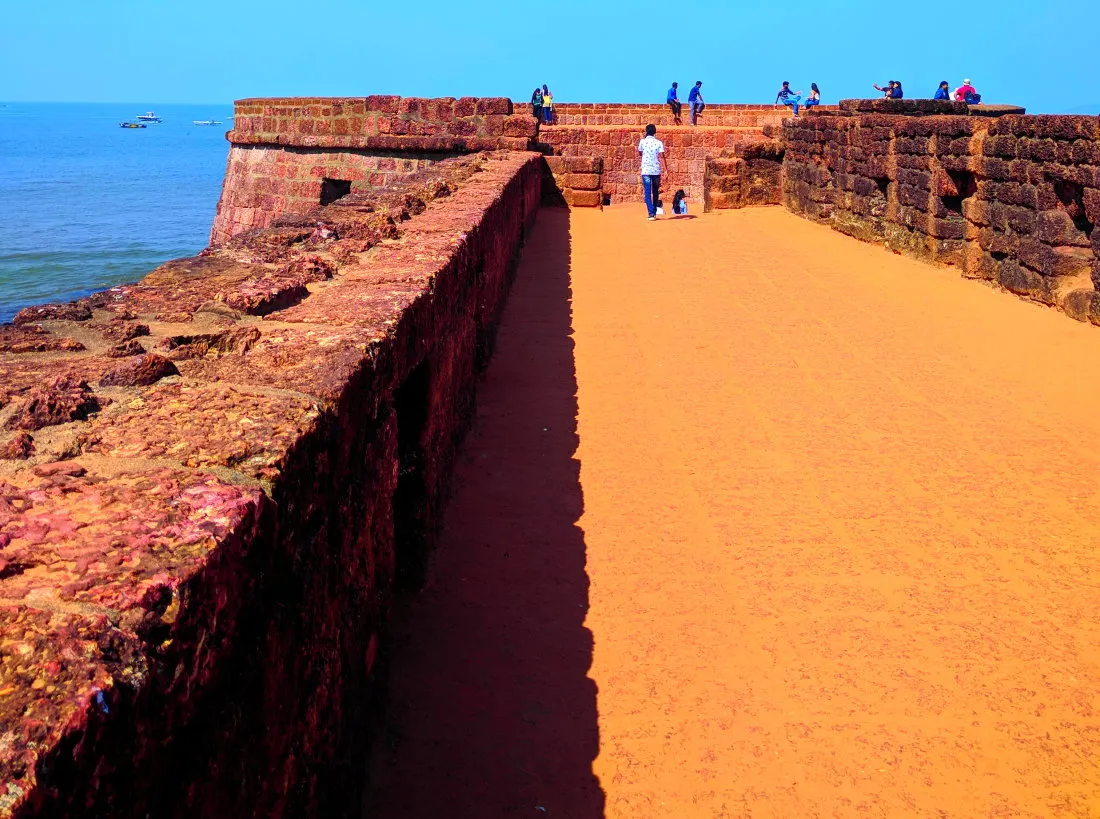


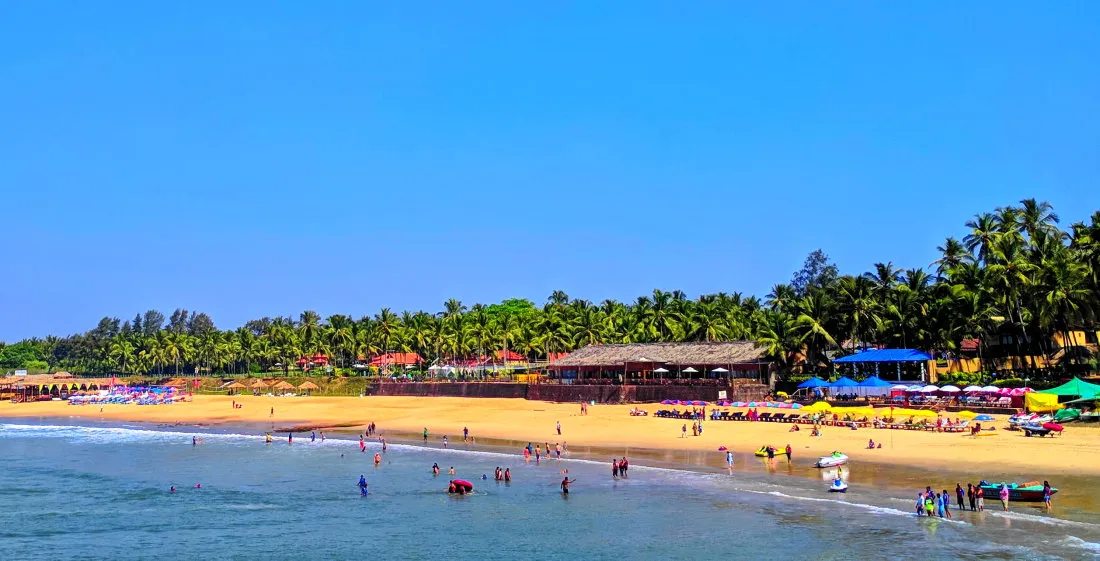
In present times, reaching India from Lisbon required less than a day’s travel by air. In the 15th century, it could’ve taken up to a year on a ship. As I stood there looking at the sea, home felt so far away, so I could only imagine what it must've been like for the settlers. A distant dream. My imagination soared back to early colonial times when there were no trains, no airplanes, no wifi… just miles of wild jungle and scorched land. Imagine being confined to a ship for about a year and then arriving at a place where people talk, dress, eat, sleep, and behave in ways that you have never seen or heard. Religions with fantastical gods, goddesses, demi-gods, demons, and so forth. What was it like to stand on that fort in the evenings with your eyes cast upon the sea? Behind you, the hot steamy topography of India, a multi-armed culture with legendary beings and beasts dancing on a metaphysical fire too mind-blowing to fathom.
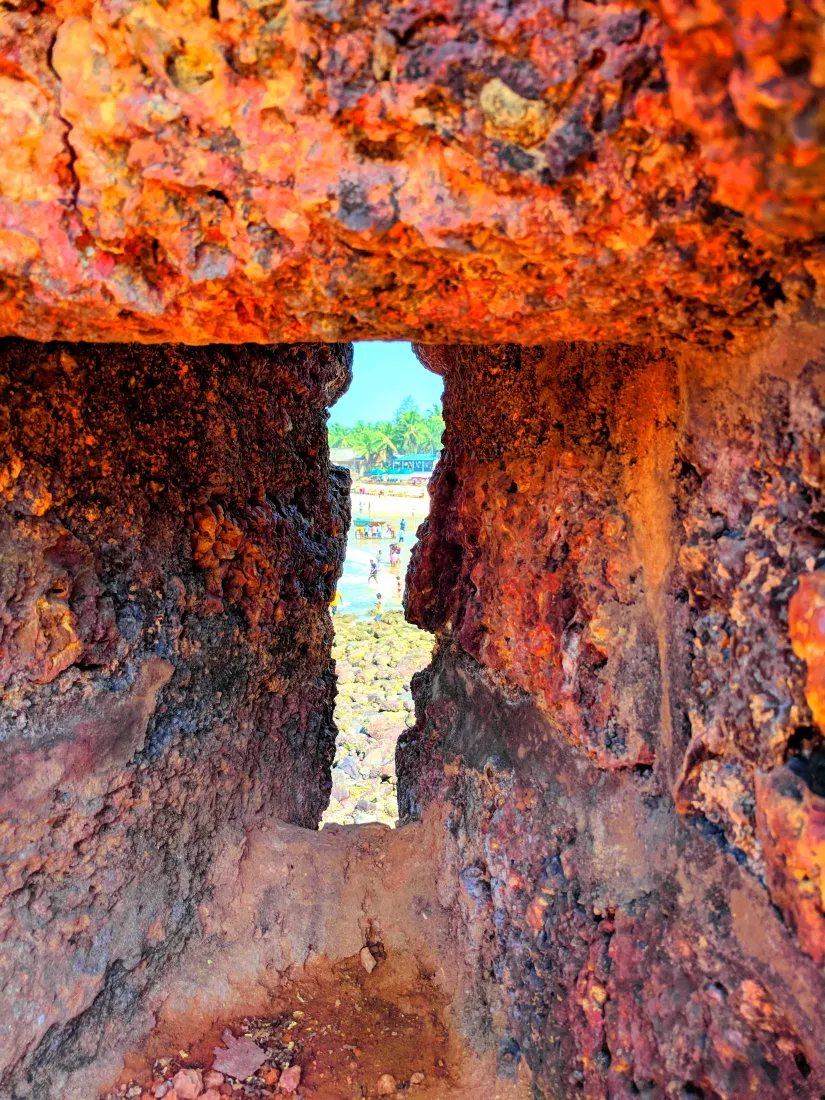
Strategic brick slits had been placed along the fort wall. The view was narrow and just wide enough to put a gun through it. Some of the openings faced towards the beach and others towards the sea. Gotta cover all your bases, I thought. What could possibly go through a man’s head standing up here? Surrounded by dangerous wilderness and inhabitants who did not really like the looks of him. Shadows in the dark. Blades glinting under the moon.
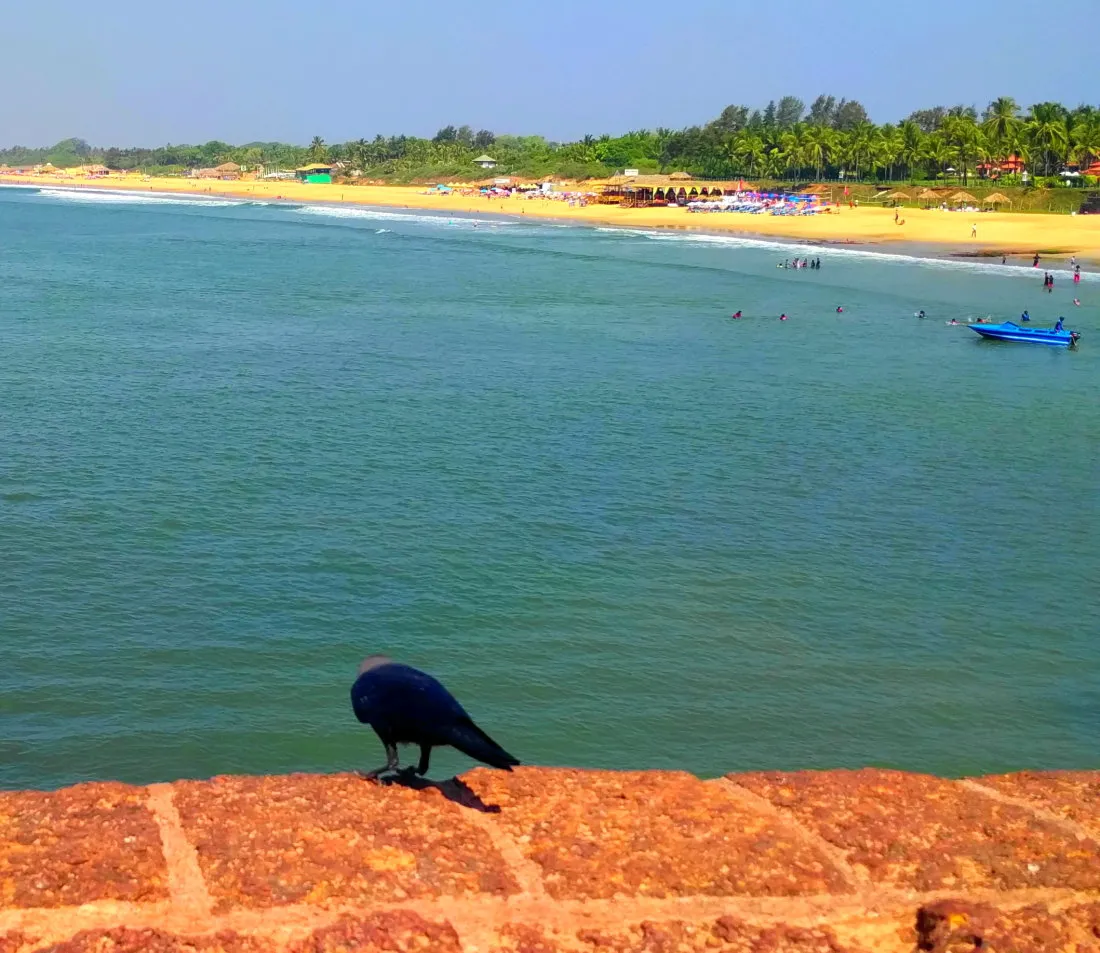
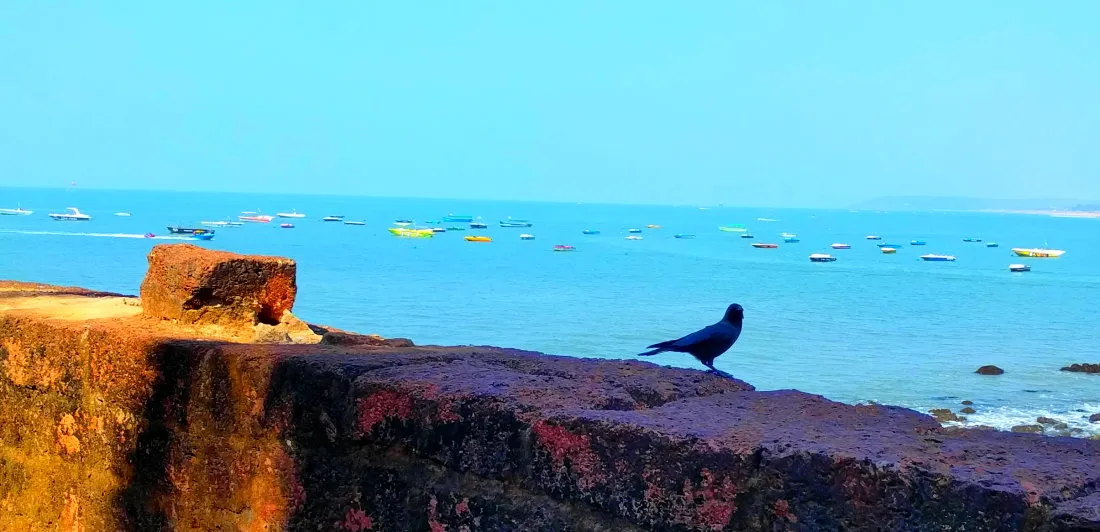
The fort rounded the coast. Gardens with brilliant plants grew on the upper portion of the outcrop upon which it perched. The leaves like emeralds glistened under the sunlight, and the flowers spilling over the fence, glowed with soft violet hues.
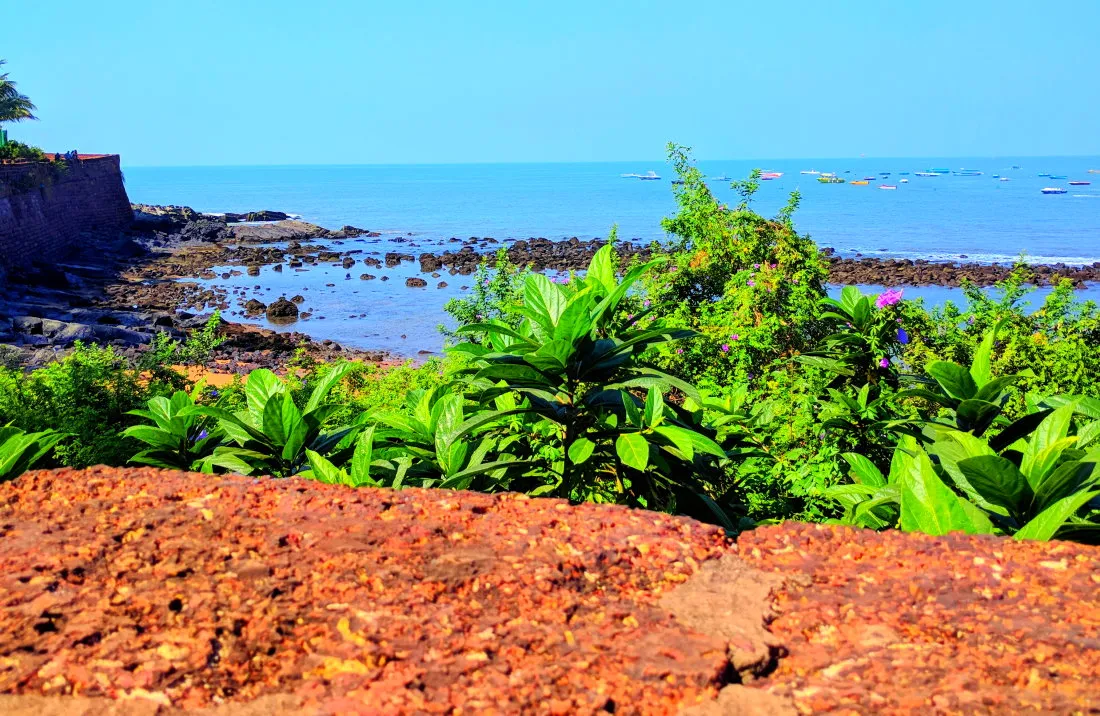
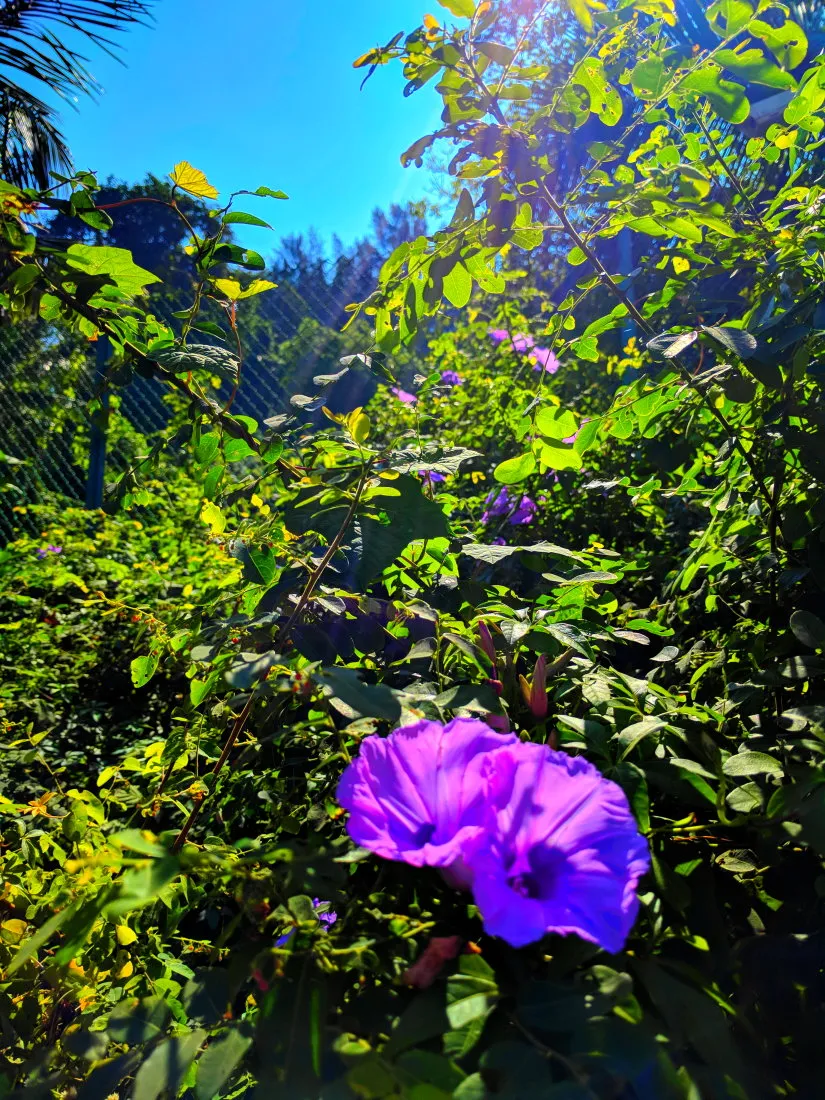
“This one looks kind of looks like a rubber tree,” I said pointing at broad-leafed plant.

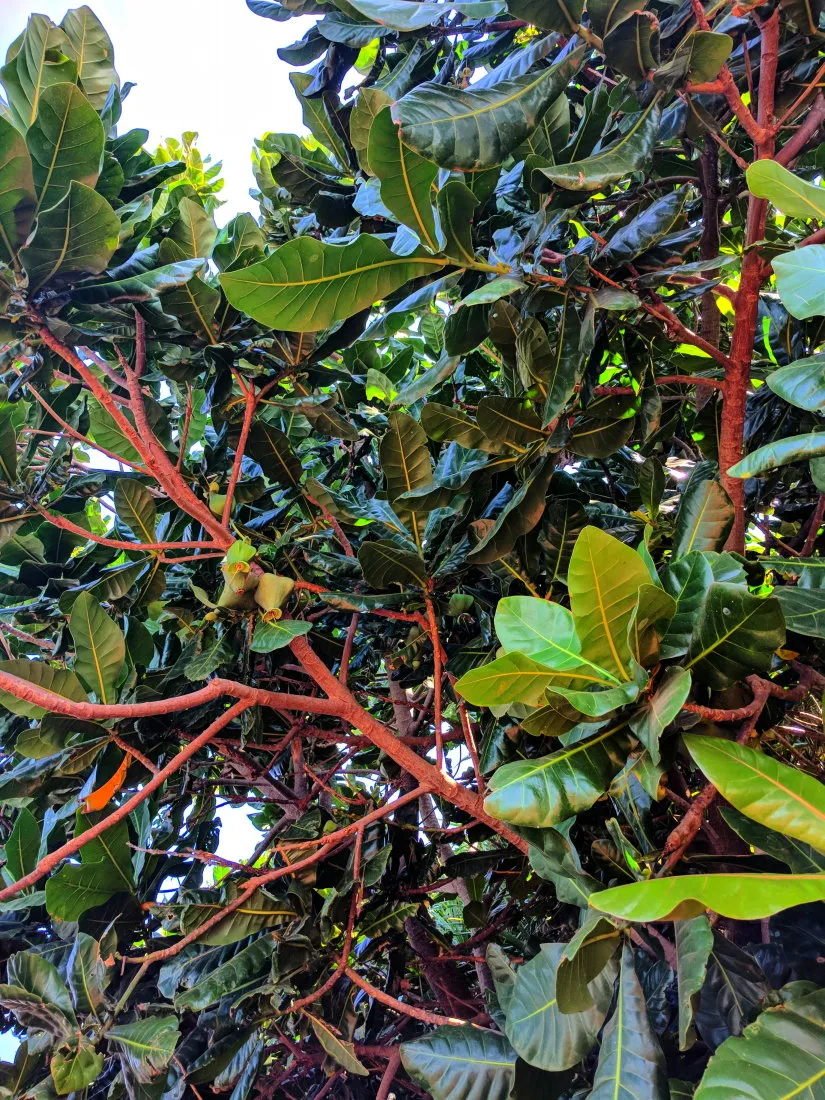
It was crowded with tourists. A mix of westerners and Indians. Indian ladies with neatly braided hair wore flowing gowns, loose silky pants, and flimsy saris blowing in the breeze. The western ladies, usually Russian, wore bikinis or wrapped themselves in beach towels, wild blond hair blowing in the wind. The casual manner with which the western women flaunted their near-naked bodies must’ve been eye-popping to the locals. Or so it seemed to me in any case. I would later find out that when it came to worshiping and displaying the female figure in all her sensual glory, Indians were the absolute masters.
Goa’s pre-colonial history is shrouded in mystery. Evidence exists that it has been inhabited since the paleolithic and Mesolithic eras Wikipedia, 2022. Waves of migration saw different groups take control of the area- Buddhists, Hindus, Muslims, and so forth.
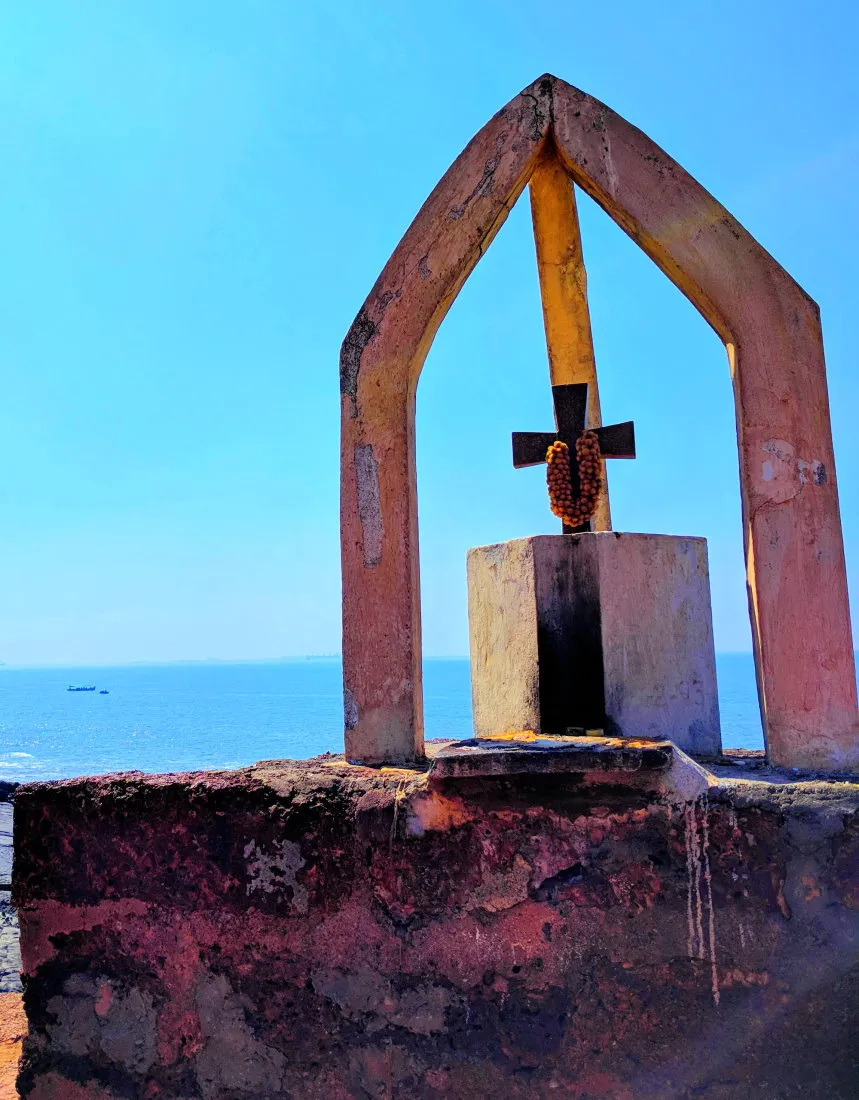
When Christians took control, they tried to convert the local inhabitants. Some of them did so and benefitted from the allegiance to the European nations. Others resisted and even pushed back against the efforts by zealous Jesuit missionaries. Then stuff got real when the Inquisition arrived and began canceling non-Christian behaviors and traditions.
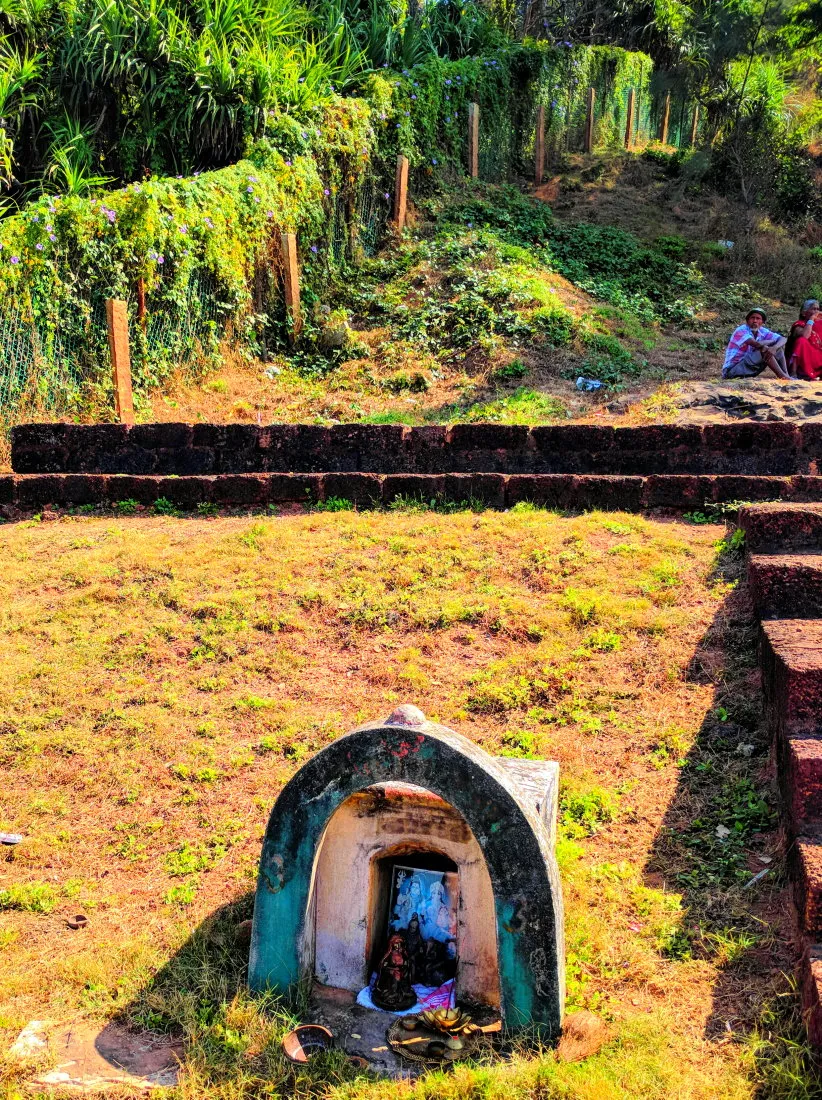
After walking around the grounds and checking out the lighthouse, we decided to head back to town. The streets were bustling around the fort and finding a tuk-tuk was nearly impossible.
“Let’s head back the way we came along the beach,” said Bianca, not wanting to relive the traffic madness of the previous day.
It was going to be a long hike back.
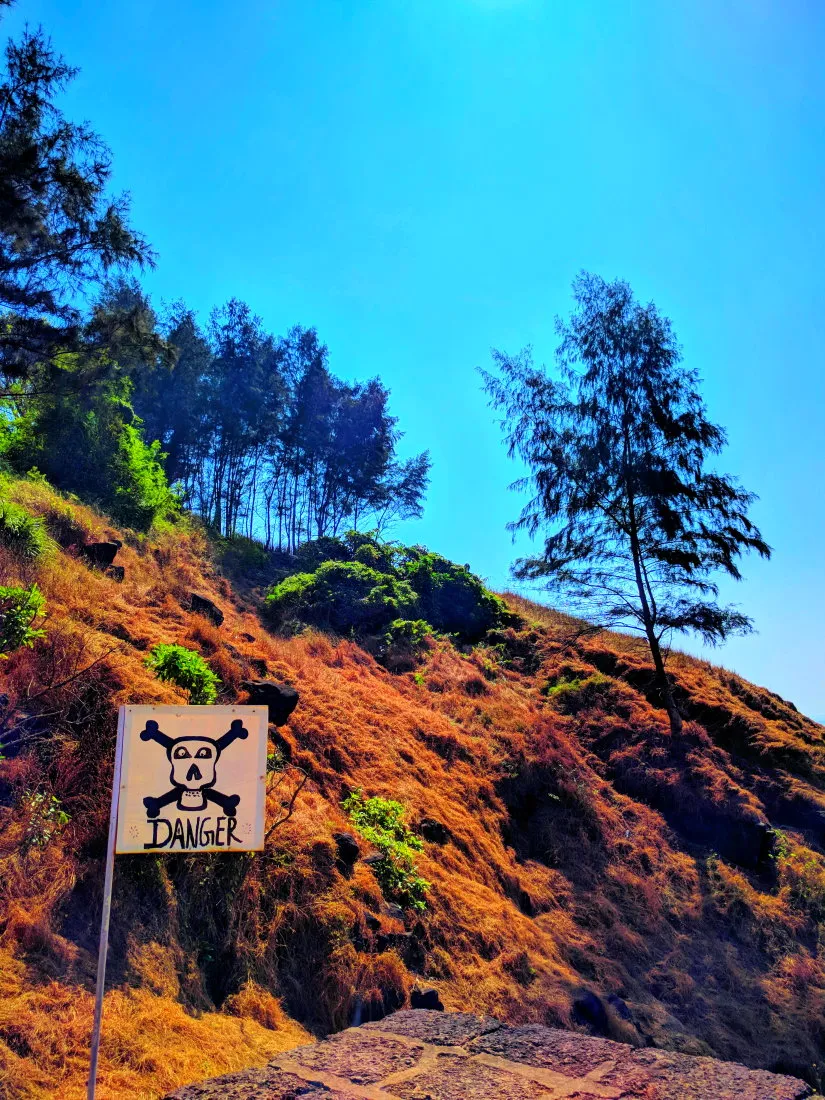
“I need some grub in me belly before we start,” I said and pointed at a restaurant perched on a small cliff accessible by stairs. “Let’s go over there."
As we made our way there, a man at the top of the stairs began waving his arms and coming down the steps towards us.
“Not this guy again,” I said, recognizing our friend from the earlier encounter on the beach.
He expressed great happiness to see us again and urged us to visit his brother’s jewelry store located just behind the restaurant. Caught off-guard, Bianca and I couldn’t think of an excuse fast enough, our Canadian enculturation kicked in, and we cheerfully agreed to visit the jewelry shop.
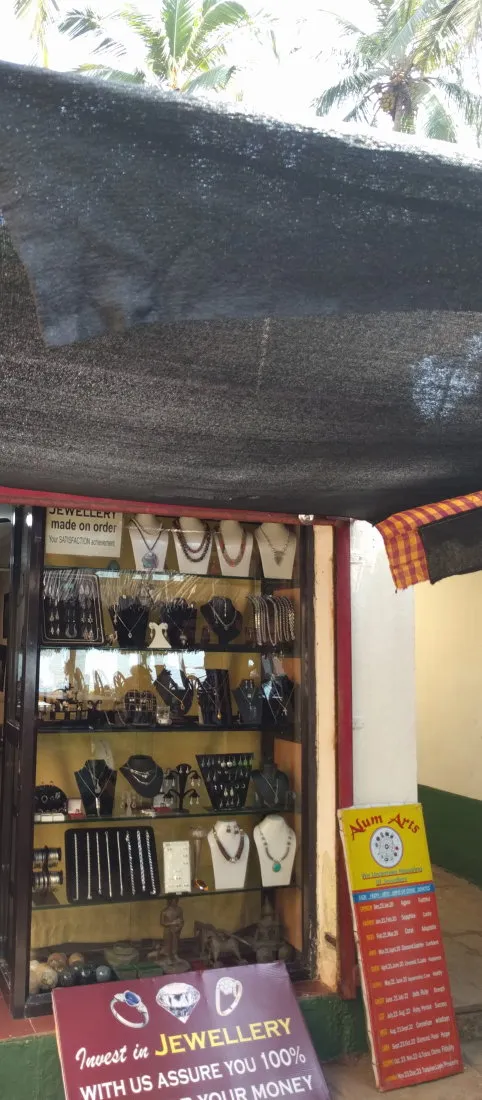
Inside the shop, a bespectacled gnomish fellow greeted us with a grin.
“I make the jewelry. I use real diamonds. No fake. I have a machine, you see. To check for real diamonds.”
Bianca examined a few pieces. The brothers described each one in detail.
“We make them in our shop. We have a shop. Not far from here. You can come and see, if you wish. It’s not far from here.”
Each piece that Bianca touched came with an exquisitely detailed description. I noticed a small display tucked in the corner with several figurines. The craftmanship was super but it was clear that the pieces were very old.
The gnomish brother beamed with pride when I told him that I found these pieces extremely interesting.
“I find them,” he said. “I go to villages, far, far, then I find them.”
“They look wonderful. Very old I imagine.”
“Yes, very old. I drive far to village and ask the people. They belong to family and they pass on to them and so on. Then they sell to me.”
I looked closely at a wonderful pendant depicting the image of the Buddha. The craftsmanship was superb. I was quite certain that such a piece belonged in a museum somewhere, so I did not bother asking for a price.
“Please sit down,” said our friend pointing at a couple of chairs near the counter. They were keen on showing us some pieces with diamonds.
“We use only real diamonds,” the jeweler said chuckling.
“And you make the pieces yourself?”
“Oh yes!” he said with a grin. “My workshop is near. I take you, if you wish.”
We assured him it wasn’t necessary.
“It’s only ten, maybe twelve kilometers,” he said turning to his brother, who looked on with a bemused expression.
We admired the jeweler’s dedication to his craft but declined the offer.
In colonial times, Goa was the administrative capital of the Portuguese eastern empire. From there, the Portuguese crown tried to control the eastern trade, which included horses, gold, spices (e.g., pepper, ginger, cloves, nutmeg, and cinnamon) and even slaves. There was also a thriving diamond trade (Cartwright, 2021).
“We have a machine.” The jeweler looked around for it but couldn’t find it. Muttering, he stood up and disappeared through back door. A couple of minutes later he came back with a hand-held device the size of an electric toothbrush. He fiddled with the buttons on the machine then grabbing a necklace, he placed the tip against the diamon. Nothing happened. He turned it this way and that until finally the machine beeped and a red light came on.
“There!” he said triumphantly. “This is not a diamond. See? It's red.”
Then grabbing a ring from the tray, he repeated the procedure, fiddling with buttons until a green light came on.
“There! This is real diamond.”
I was fairly impressed with the little device, but this only made me feel bad because he had gone through all the trouble of demonstrating while we had no intentions of buying any diamonds. Bianca did pick a bracelet, a necklace, and charm. Then we said our goodbyes with many waves and smiles and promises to return.
“Do you want to eat here?” Bianca said.
“No, let’s keep going. I need some fresh air.”
Further down the beach, we came across a restaurant with a large makeshift awning. Live western music wafted through the fresh open-air atmosphere. Classic rock Americana.
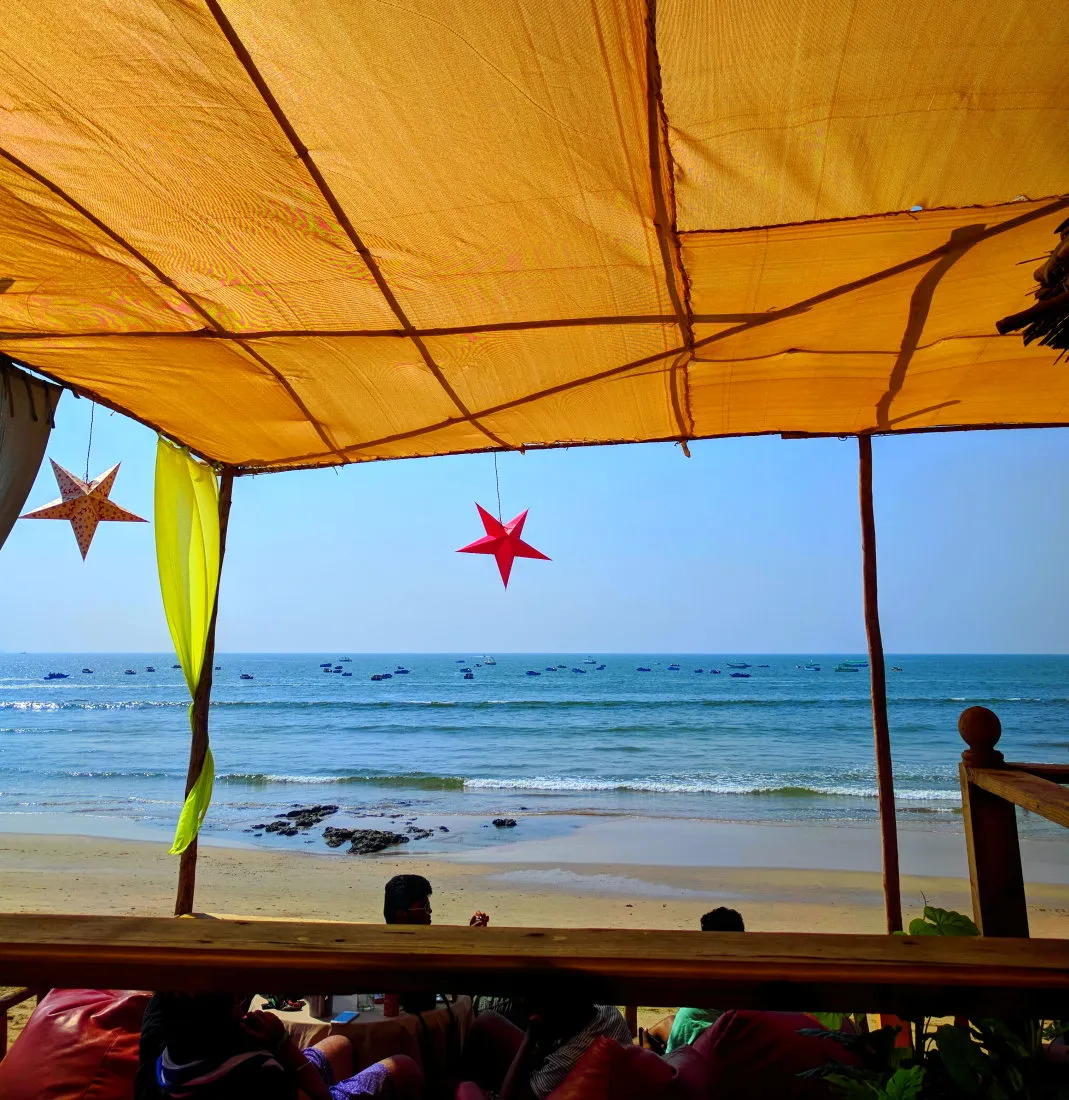
We had a great view of the sea and the fort in the distance. A cool sea-breeze blew across the shack, and the stars dangling from the awning swayed lazily in the air.
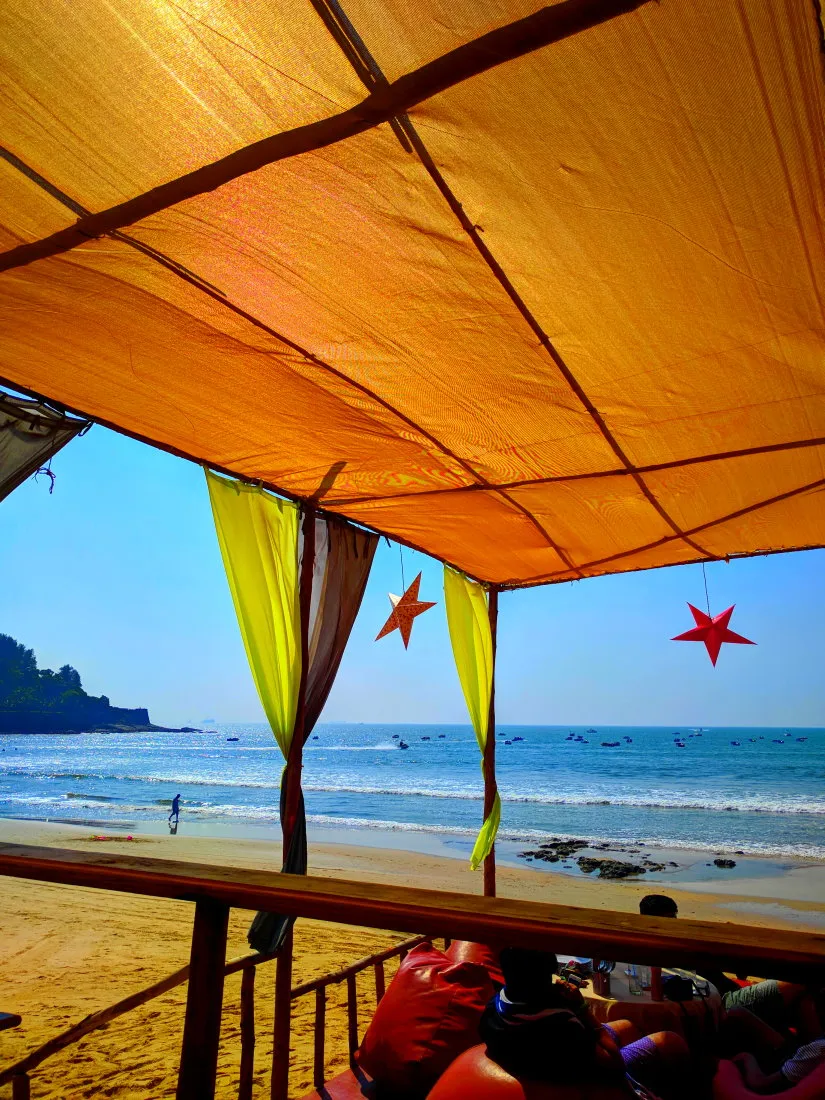
I felt like we were suspended in time. The blowing breeze. The chilled music. Delicious food and drink to delight the senses. A perfect moment of sensual experience. Don't think I was not aware of the trappings of the wheel of Samsara. Yes, it was sensual delight at that moment, a Tantric virtue, but I also felt a sense of impermanence. These experiences would come and go. I could not hold on to them, even if I wanted to. Everything is in flux and impermanent, I thought as I sank my teeth into a crab leg.
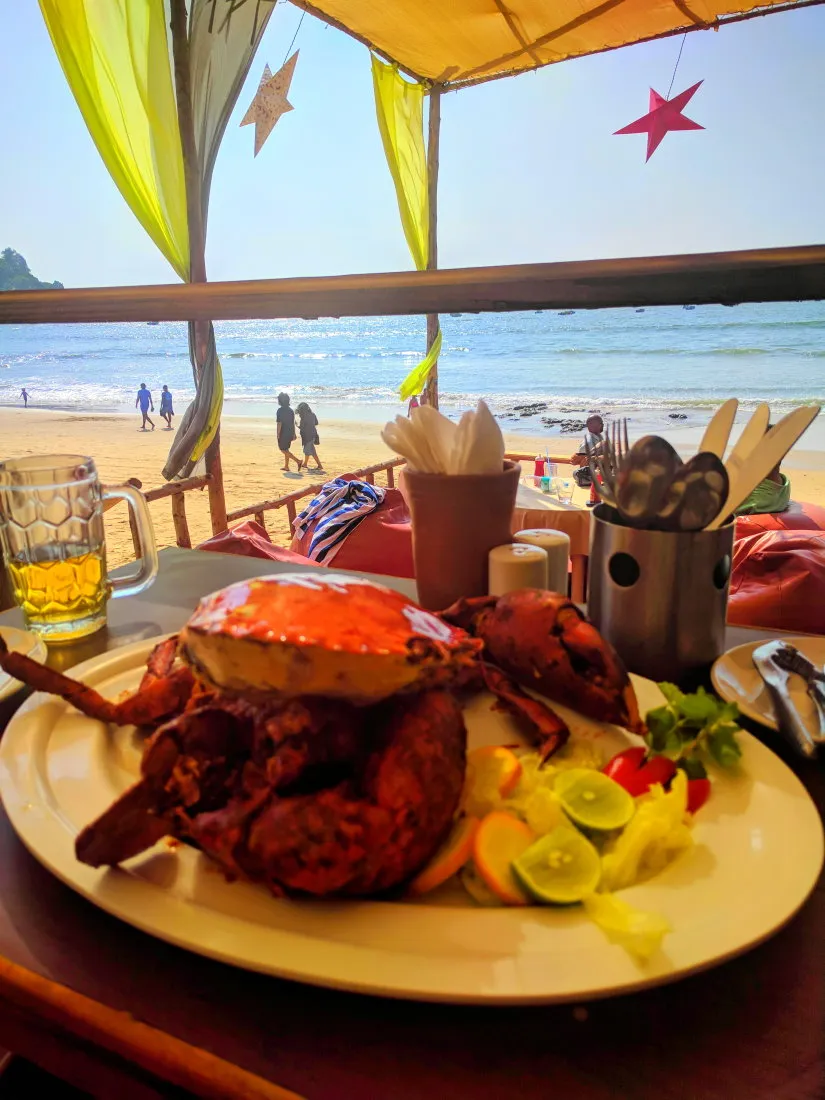
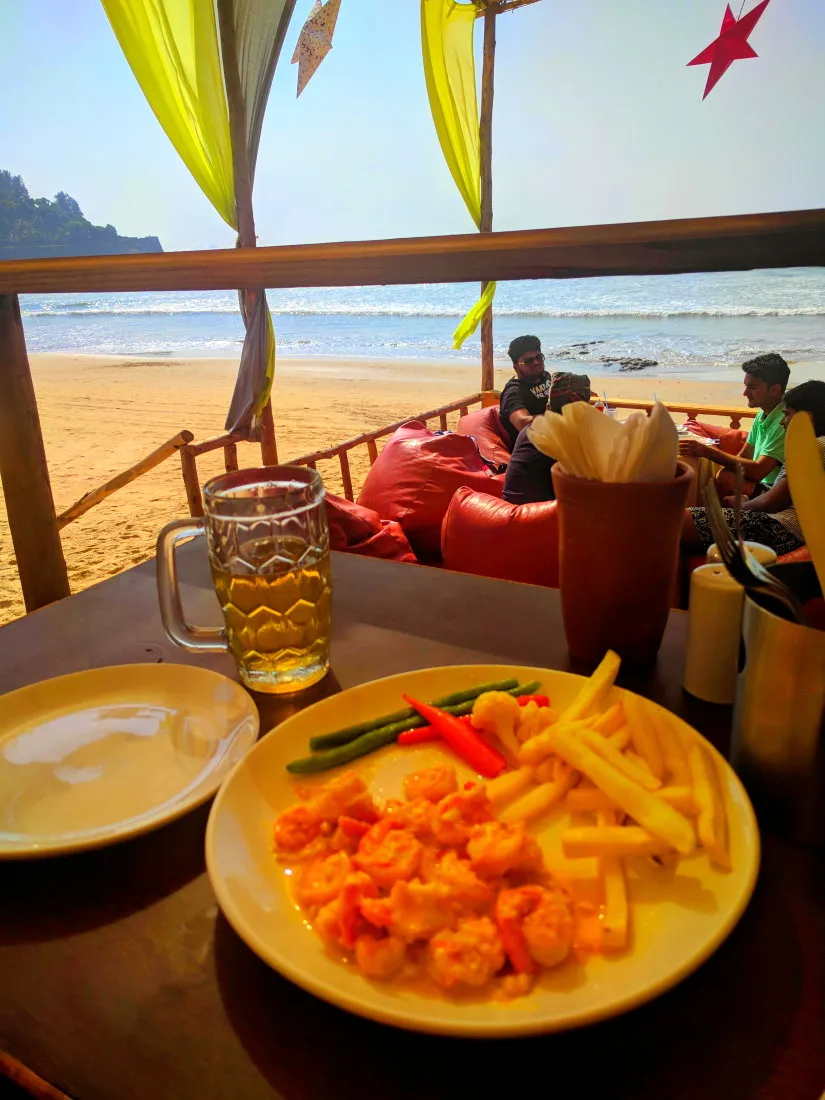
Afterwards, Bianca and I walked along the beach and reached our destination as evening began to cast its long shadows on the Goan shore.
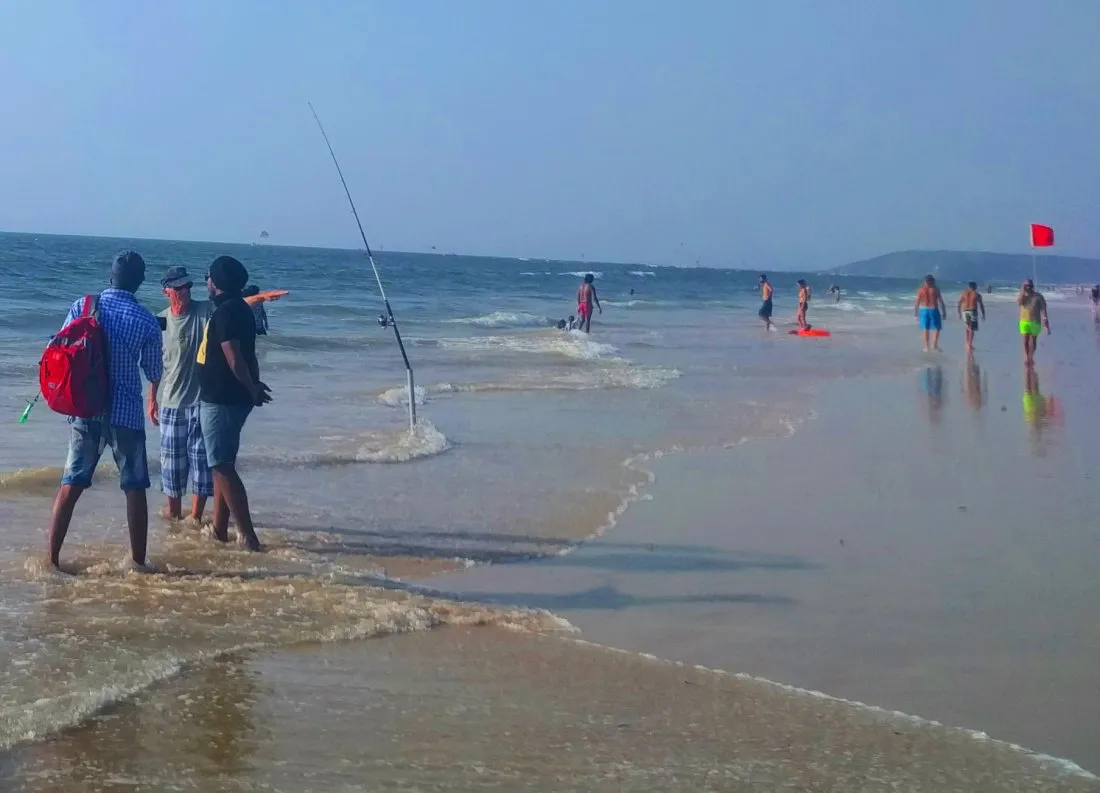
Resources
- Goa on Wikipedia
- Portuguese Goa by Mark Cartwright
- Fort Aguada wikipedia page
- India, the coming of Europeans
Dive into another section:
1.1, 1.2, 1.3, 1.4, 2.1, 2.2, 2.3, 2.4, 3, 4.1, 4.2, 4.3, 5.1, 5.2
Images by @litguru